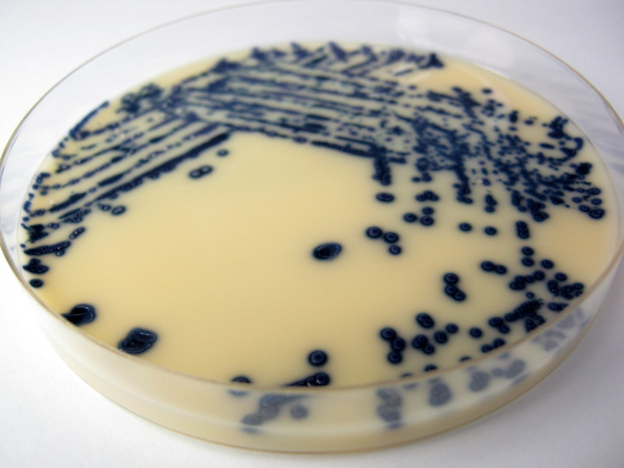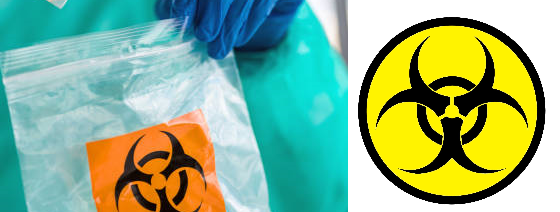Agents of bioterrorism are usually found in the hands of terrorists, scientists, and most of all some rogue nations. In the hands of the extremists, biological and chemical agents used for terrorism are unsafe and can be used with or without provocation to cause threat, economic panic, sickness, and death in a target human population. But these agents are controlled under international laws in the hands of the research organizations and governments or countries that have them in their weaponry. However, some countries (as experienced in recent times) can use these chemical and biological agents as offensives against their enemies even in the slightest provocation.
While biological weapons (made form microbes including bacteria, viruses and fungi) may not be stockpiled by governments of nations due to the ease in producing them, a handful of developed countries have stockpiles of chemical weapons (e.g. sarin and mustard gas) in their military hardware. Also, mischievous private organizations with good financial backings can also start and stockpile biological and chemical weapons, and these can be accessible to terrorists who use them to cause terror and death in human populations.
Thus, the Chemical Weapons Convention (CWC) to which many nations of the world (especially those with stockpiles of chemical weapons) are signatories to, and the United Nations Disarmament Act helps to restrict nations in possession of chemical and biological weapons from using them, and most importantly adhere strictly to the prohibition of their usage and constantly give themselves to international scrutiny in order to ensure that they are complying to laid down rules regarding these agents. Table 1 summarizes the distinguishing features of biological agents (i.e. microorganisms) which are usually used for bioterrorism attack by terrorists.
Virtually all biological agents pose one health risk or the other, but possessing them do not make them a hypothetical threat until they have been weaponized and distributed in actual fact to their target human or animal population. Though a plethora of microbes and their metabolic products (e.g. toxins) may meet the criteria of a weaponized biological agent and be regarded as one, the U.S.
Table 1. Summary of characteristics of selected bioterrorism agents
| Agent | Incubation period | Person to person spread | Morbidity/mortality | Diagnosis* |
| B. anthracis | 1-5 days | No | HIGH/HIGH | Culture/serology |
| Y. pestis | 2-3 days | Yes | HIGH/HIGH | Culture/serology |
| F. tularensis | 2-10 days | No | HIGH/LOW | Culture/serology |
| Brucella spp. | 5 days-two months | No | HIGH/LOW | Culture/serology |
| Botulinum toxins | 1-5 days | No | HIGH/HIGH | ELISA or mouse inoculation for toxin detection |
| Variola virus | 7–17 days | Yes | HIGH/HIGH | Detection via ELISA, PCR, or virus isolation |
| Viral hemorrhagic fever agents (e.g. Lassa virus and Ebola virus) | 4 days–3 weeks | No | HIGH/HIGH | PCR, ELISA, serology, virus isolation |
| *ELISA = Enzyme-linked immunosorbent assay PCR = Polymerase chain reaction | ||||
Center for Disease Control and Prevention (CDC) has deemed it fit to catalog recognized microbes of terror based on their potency and threat. According to the CDC, biological agents of terrorism are placed in three (3) priority categories based on initial public health efforts and the apparent threat of these agents.
These categories are:
References
Aschengrau A and Seage G.R (2013). Essentials of Epidemiology in Public Health. Third edition. Jones and Bartleh Learning,
Aschengrau, A., & G. R. Seage III. (2009). Essentials of Epidemiology in Public Health. Boston: Jones and Bartlett Publishers.
Castillo-Salgado C (2010). Trends and directions of global public health surveillance. Epidemiol Rev, 32:93–109.
Centers for Disease Control and National Institutes of Health (1999). Biosafety in Microbiological and Biomedical Laboratories, 4th edn, Washington DC: CDC.
Guillemin J (2006). Scientists and the history of biological weapons. European Molecular Biology Organization (EMBO) Reports, Vol 7, Special Issue: S45-S49.
Halliday JE, Meredith AL, Knobel DL, Shaw DJ, Bronsvoort BMC, Cleaveland S (2007). A framework for evaluating animals as sentinels for infectious disease surveillance. J R Soc Interface, 4:973–984.
Nelson K.E and Williams C (2013). Infectious Disease Epidemiology: Theory and Practice. Third edition. Jones and Bartleh Learning.
Porta M (2008). A dictionary of epidemiology. 5th edition. New York: Oxford University Press.
Rothman K.J and Greenland S (1998). Modern epidemiology, 2nd edition. Philadelphia: Lippincott-Raven.
Rothman K.J, Greenland S and Lash T.L (2011). Modern Epidemiology. Third edition. Lippincott Williams and Wilkins, Philadelphia, PA, USA.
Discover more from #1 Microbiology Resource Hub
Subscribe to get the latest posts to your email.



